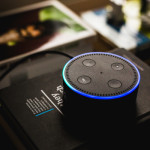Connected Technology
Smart home technology – what once was a pipe dream is now coming to fruition. Technically referred to as home automation technology, it is comprised of computer devices that work together to manage various features in your home which would normally be controlled manually. Common examples include remotely controlling lights, thermostats, and even locking and unlocking doors.
As the demand for smart home technology continues to grow, it is important to understand how the technology works and develops to suit our growing needs and wants.
Internet of Things
Smart home technology thrives off of internet connectivity. More and more manufacturers are integrating Wi-Fi enabled remote controls into their products, enabling connection to your wireless home network and thus advancing the development of a “smart” network of appliances known as the Internet of Things (IoT).
Although more people refer to this as “smart technology” rather than IoT, the latter does address the very heart of the draw – the ability to control these devices remotely over the internet, no matter how far the distance.
Smart Security
One of the first places we saw widespread use of smart technologies was in home security systems by way of Internet-accessible security cameras. These security cameras allow homeowners to keep an eye on their property while they are away. As technology advanced, these became more compact and affordable, further spreading their use for home security.
Aside from cameras, more smart security devices emerged and included Wi-Fi enabled electronic deadbolts to remotely grant access to your home, smart lamps to control lighting to ensure you no longer enter a darkened home and smart thermostats to save energy and provide climate-control for a comfortable environment.
Entertainment & More
Security was not the only thing to benefit from IoT. Connected devices can now be found in the kitchen, with smart refrigerators that can remind you when you need to hit the grocery store and smart ovens that allow you to monitor your foods while they cook.
In terms of entertainment, web-enabled televisions can stream digital media content directly to the screen while being controlled by a mobile phone or tablet. Smart devices like Google Home or Amazon Echo can be given verbal commands to control nearly every aspect of your smart home.
As this technology continues to develop, what would you like to see? Share with us on Facebook, Google+, Twitter, LinkedIn, and Pinterest today!
Keep an eye on your home or business with our selection of quality CCTV security cameras and surveillance system packages. Visit us online or call 888-203-6294 to request a free quote or site survey today!
Smart Home Technology
Smart home technology seems to be popping up everywhere these days, from locks to lights to thermostats. Such an abundance of tech and devices makes it hard to determine which ones are really worth the hype.
When you are shopping for smart home technology and devices, it is best to focus on how these will help you. Those that save you time and money in the long run are usually better choices. Here are a few examples of good smart home investments.
Smart Switches
Smart switches allow you to control lights and appliances remotely from an app. Save energy and ensure your devices and appliances are not left on standby. Most smart switches are easy to install as they simply plug into an existing power outlet, making them a sound purchase.
Air Purifiers
Air pollution is not limited to the outdoors. The air within your home could be polluted too. To improve the air quality in your home, a smart air purifier could be just the trick. Most air purifiers capture gases and fine particles such as allergens and pollutants. What makes them smart is their ability to be controlled remotely, enabling you to monitor air quality, make adjustments, and even schedule purifications with your smartphone or device from afar.
Smart Smoke Detectors
Aside from detecting smoke and carbon monoxide faster than standard models, smart smoke detectors deliver voice alerts to tell you when and why the alarm is sounding.
Baby Changing Tables
No, this does not mean the end of your diaper-changing days. It does mean that you get an easier way to monitor your baby’s health. Smart changing pads allow you to track your baby’s weight, food intake, and any changes, making it a great product for parents.
Smart Fridges
While these have been around for a while, they are getting even smarter. For example, the LG Smart InstaView has partnered with Amazon to enable you to order items directly from the store by scanning items on the panel of the fridge. And thanks to a cleverly placed security camera, you may view the contents of your fridge from your phone! No more getting up to linger in front of your open refrigerator, wasting energy and time.
Which smart home appliances would you consider a smart investment? Share with us on Facebook, Google+, Twitter, LinkedIn, and Pinterest.
If you’re in the market for home security solutions, visit SecurityCamExpert.com for a wide selection of CCTV surveillance camera packages and more. To learn more about our site surveys and installation services, or for a free quote, please call us at 888-203-6294.
How To Turn Your Home Into A Smart Home
Modern technology allows us to easily upgrade our homes to smart homes. Smart homes afford us the ability to automate certain aspects of our homes in order to enhance our daily living. These changes and upgrades in technology enable you to customize your living space, control key systems remotely, and can even help you become more energy efficient.
While this added convenience is appealing to many, there are some things to consider before you begin your transition to a smart home.
Budget
First and foremost, you should set a budget for your upgrades. While smart technology was once thought of as a luxury only available to the wealthy, many devices are more affordable these days, making it easier for more people to make the switch.
Your budget will depend on many different factors, such as the size of your home and your personal goals for this endeavor. You will want to consider how many systems and appliances you want to automate and how integrated you would like your systems to be. For example, if your home is already wired for high-performance broadband connection, you can keep a tight budget. On the other hand, adding devices throughout your entire home will likely cost a significant amount more, necessitating a larger budget.
When choosing your devices, pay attention to the different levels of integration. Also, consider using products from brands that partner with other smart-home device makers to ensure compatibility and future expansions. Because these brands may offer special deals, you may even end up saving money.
Brainstorm By Room
Once you’ve considered all the practicalities of this smart home upgrade, you can start brainstorming about what you would like for each room. Keep in mind that the goal of a smart home is to make your life more convenient. Remember, what works for some people may not work for you. For the best result, your smart home should be tailored to you and your lifestyle.
With that being said, begin by evaluating each room individually. What does this room do? How could smart technology help this room? Take the kitchen, for example. If you loaded the dishwasher, but forgot to start it, you could do so remotely and come home to clean dishes ready for dinner.
Prioritize Installation
Once you have an idea of what you want, prioritization is next. The most important products to start with are likely those which you use every day.
One way to prioritize is to consider automating from the outside in. Start with how to get in and out of your home, which may include smart locks or smart garage door openers. Next, you may want to consider smart lighting, to avoid fumbling in the dark upon arrival, or a smart thermostat to conserve energy and create your ideal climate.
Making the initial switch is the biggest step. Once you get accustomed to the convenience and efficiency, you will likely find new ways to incorporate more smart devices into your daily routine.
Smart Devices For Every Room
Once you’ve tackled the big stuff, here are a few smaller, simpler options you may want to consider implementing in your new smart home.
- Smart outlet adapters in the living room allow you to plug in different devices and control them remotely through an app on a smartphone or device.
- Motorized drapes for the bedroom let you easily adjust the lighting and privacy without getting out of bed.
- Ditch your half-asleep coffee brewing ritual in the morning by installing a smart coffee maker in your kitchen, which you can control through an app.
- Remote garage door access allows you to open, close, and monitor your garage door from anywhere at any time.
Have you considered or are you currently using smart technology within your home? Which do you find is the most convenient? Share your thoughts and experiences with us on Facebook, Google+, Twitter, LinkedIn, and Pinterest.
Protect your smart home with quality security cameras and CCTV surveillance equipment from SecurityCamExpert.com. Browse our stock online or inquire about our products and installation services by calling 1-888-203-6294.

